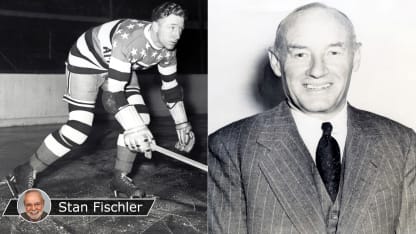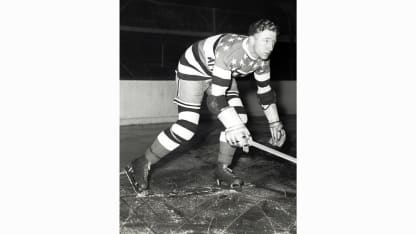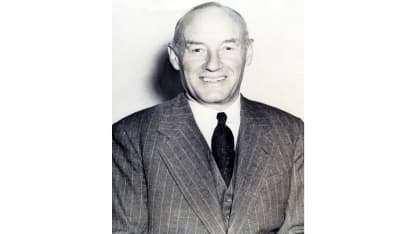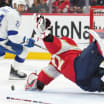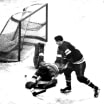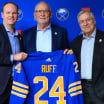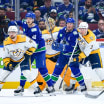But when it came to heroism beyond the call of duty, few could match a player who was less known than almost all others -- but no less courageous.
Harry "Hard Rock" Torgerson starred on defense for the New York Stock Exchange Brokers, who played in Metropolitan League games at Madison Square Garden. Torgerson enlisted in the Marines shortly after the Japanese attacked Pearl Harbor and soon became one of the greatest U.S. heroes in the Battle of Guadalcanal, one of the war's major turning points.
Torgerson's actions were pivotal in the victory.
After several significant defeats in 1942, Americans longed for a morale-building triumph in the Pacific. To achieve it, U.S. Marines first had to invade Gavutu and breach its defenses, which were honeycombed with caves and tunnels harboring enemy gunners.
According to author and war correspondent Richard Tregaskis, an eyewitness, "The outstanding hero was Captain Torgerson." In his book "Guadalcanal Diary," Tregaskis detailed how Torgerson blasted at least 50 enemy caves with homemade dynamite bombs. "His method was to tie 30 sticks of dynamite together, run to the cave mouth while four of his men covered it with rifles and submachine guns, light the fuse, shove the TNT in amongst the Japanese and run like hell," Tregaskis wrote.
Torgerson used 20 cases of dynamite while dodging enemy bullets as best he could. "A grazing bullet struck his rear end," Tregaskis reported, "but that didn't stop his pyrotechnic campaign."
Torgerson's commanding officer, Capt. George R. Stallings, gasped in awe when Torgerson attached a five-gallon can of gasoline to one of his homemade bombs.
"I wanted to make it better," he said, though his invention nearly backfired.
"That bomb went off with a great roar, knocked Torgerson down and blasted away most of his pants -- as well as blowing in the roof of a Japanese dugout," Tregaskis wrote.
But the battle was far from over, as were Torgerson's heroics. In September, the Japanese launched a major attack that raged along what became known as Bloody Ridge. If the Japanese forces succeeded, they would overrun the American-held airbase, Henderson Field, and push the Marines into the sea. It was at this point Torgerson won a Silver Star for gallantry in action and a Purple Heart.
According to Michael S. Smith, author of "Bloody Ridge: The Battle That Saved Guadalcanal," the Japanese aimed to penetrate the Marines' left flank, which had been left unguarded. Torgerson rushed to the gap and repulsed a bayonet charge with heavy losses for the enemy. The Japanese tried again two hours later, but with Torgerson's help they were beaten back with, as he put it, "the liberal use of grenades." The Marines finally took Guadalcanal, turning the tide of the war in the South Pacific in the Allies' favor.
Torgerson returned to New York after the war ended in 1945 and resumed his hockey career. His former team, the Stock Brokers, had been transformed into the Brooklyn Arma Torpedoes because the Arma factory in Brooklyn produced torpedoes for the U.S. Navy during the war and sponsored the team that continued playing after it ended.
I remember watching Torgerson manning the Torpedoes defense at Madison Square Garden in the mid-1940s. Nor was he the only hero on the club's roster.
"Our lineup," Torgerson said, "was loaded with former GIs."
That I remember, but none could boast that he twice helped turn the tide in the Pacific like "Hard Rock Harry."
